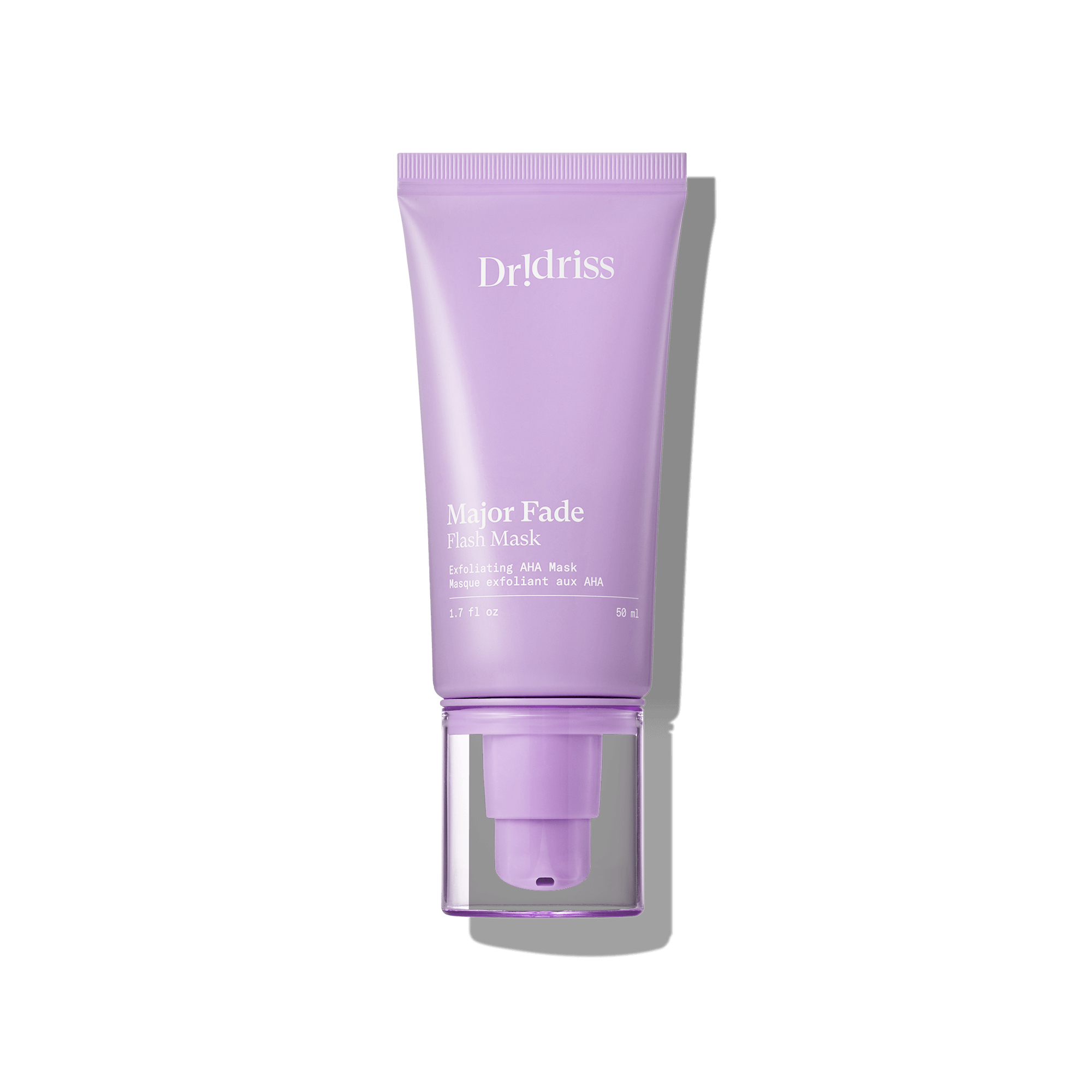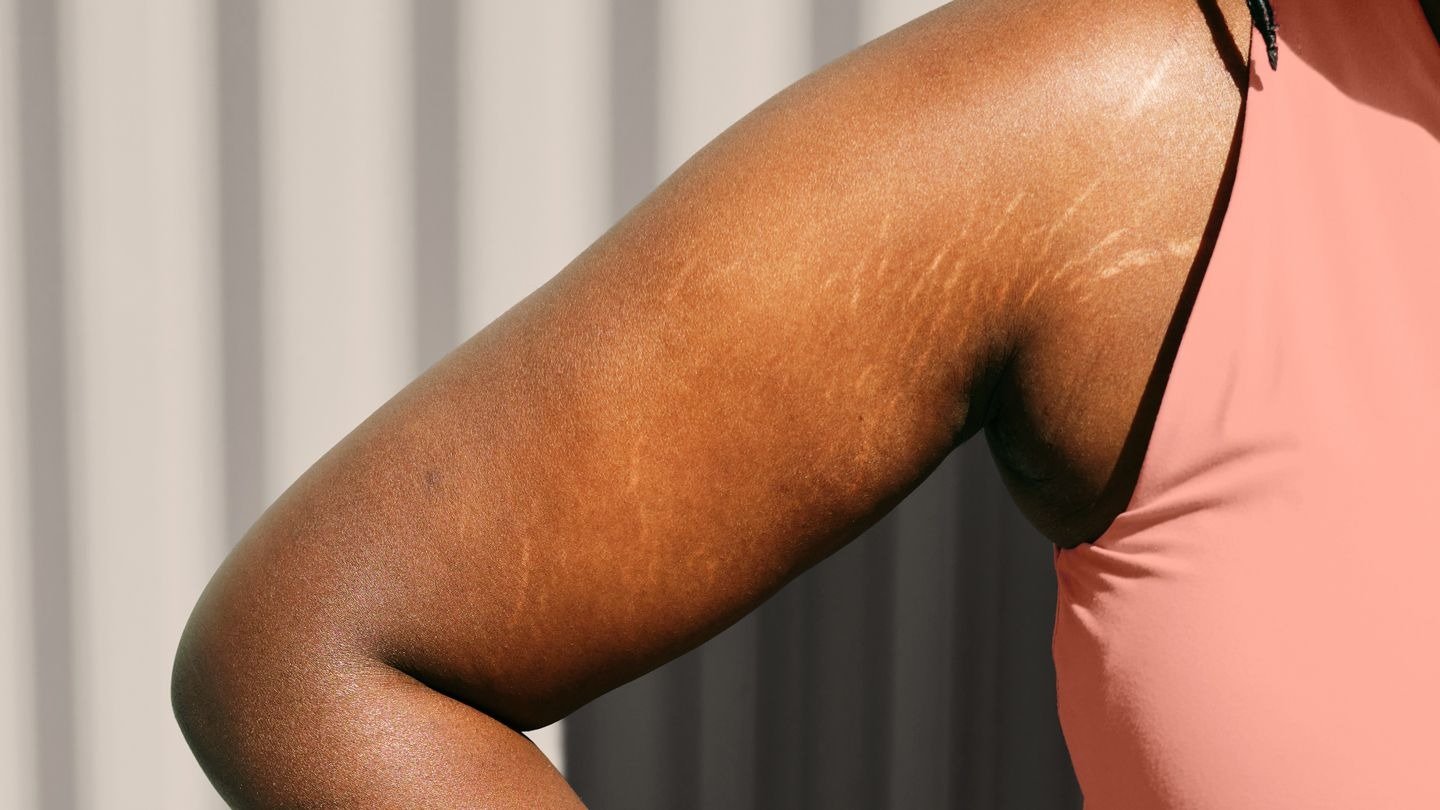Smooth Moves
Rethinking Stretch Marks and Cellulite
It’s a balmy morning, and while some are already basking in the thought of sun-soaked beaches and breezy summer evenings, others feel a pang of unease. The idea of donning a swimsuit or baring skin in shorts might seem daunting. Stretch marks and cellulite, those universal yet often stigmatized features, are frequent culprits. But here’s the thing: these marks and dimples are far from flaws. They’re part of the human condition. The question isn’t how to erase them but rather how to embrace them while making informed decisions about their care.
What Are Stretch Marks?
Stretch marks, known medically as striae, are a form of scarring that occurs when the skin stretches too quickly to accommodate growth, weight gain, or hormonal changes. This rapid expansion causes collagen and elastin, the building blocks of our skin, to break down. Initially, stretch marks appear red or purple as the body’s inflammatory process kicks in. Over time, they fade to white.
Genetics play a significant role in determining whether you’re predisposed to developing stretch marks. Look to your family for clues. Common areas include the abdomen, thighs, buttocks, breasts, and even the upper arms. These marks often accompany life’s major milestones (puberty, pregnancy, weight fluctuations) serving as subtle chronicles of change.
What About Cellulite?
Cellulite, often misunderstood, is a natural anatomical variation. It occurs when fibrous bands beneath the skin pull downward, while fat cells between these bands push upward, creating a dimpled appearance. Contrary to popular belief, cellulite isn’t exclusive to those with higher body fat percentages. Genetics, circulation, and lifestyle factors all contribute.
Poor blood and lymphatic circulation can exacerbate cellulite’s appearance. A sedentary lifestyle, high-sodium diets, and hormonal fluctuations can also play a role. Even those with seemingly flawless physiques often rely on clever lighting, angles, or post-production edits to smooth things out.
Embracing What’s Natural
Before diving into treatments, it’s crucial to shift the narrative around stretch marks and cellulite. These features are not problems to be fixed but natural characteristics of the human body. If they don’t bother you, there’s no need to act. Self-acceptance is the ultimate goal, but for those seeking to minimize their appearance, options abound.
In-Office Treatments for Stretch Marks
When addressing stretch marks, timing is everything. Red, newly formed marks are often more responsive to treatments than older, white ones. The gold standard for treating red stretch marks is the pulsed dye laser (PDL), such as the VBeam. This laser targets redness, collapsing superficial blood vessels and potentially halting further progression.
For stretch marks with a textural component (those that feel indented) stimulating collagen production is key. Options include:
Microneedling: Tiny needles create micro-injuries, prompting the skin to heal and regenerate collagen.
Microneedling with Radiofrequency (RF): Adds heat to enhance collagen stimulation.
Non-Ablative Fraxel Lasers: Specifically, the 1550 setting targets water and fibroblasts to rebuild the skin’s structure.
For deeper interventions, injectables like platelet-rich plasma (PRP) or poly-L-lactic acid (Sculptra) can stimulate collagen from within. PRP involves drawing your blood, extracting growth factors, and injecting them into stretch marks to rejuvenate the skin.
For mature, white stretch marks, repigmentation becomes the focus. Microneedling combined with topical treatments like bimatoprost (commonly used for eyelash growth) has shown promise in reactivating melanocytes, the cells responsible for pigmentation. For those seeking an immediate cosmetic solution, tattooing stretch marks to match surrounding skin tones is another viable option.
Addressing Cellulite
Treating cellulite is less straightforward. Since its root cause lies beneath the skin’s surface, effective treatments often involve breaking the fibrous bands causing dimpling. In-office options include:
Subcision: A minimally invasive procedure where a needle or blade breaks the fibrous bands, allowing the skin to smooth out.
Energy-Based Devices: Treatments like radiofrequency or ultrasound target fat cells and stimulate collagen production, improving skin’s elasticity.
Lifestyle changes can also help. Regular exercise promotes better circulation, reducing fluid retention and enhancing skin’s overall appearance. While no topical cream can truly eliminate cellulite, formulations with caffeine or retinol can temporarily tighten the skin, offering a smoother look.
Setting Realistic Expectations
Treating stretch marks and cellulite is a journey, not a sprint. Results take time, often requiring multiple sessions and a combination of approaches. Instant gratification isn’t on the menu, but incremental improvements can make a noticeable difference.
At-Home Care
For those not ready to visit a clinic, at-home options offer a gentler entry point. Regular exfoliation, moisturizing, and the use of retinoid-based creams can improve skin texture and tone. Dry brushing stimulates circulation, while massaging with oils or lotions can temporarily reduce the visibility of cellulite.
Product Spotlight
Targeted Solutions for Stretch Marks
While professional treatments and lifestyle changes can make a difference, many individuals turn to targeted skincare products to address stretch marks. Three standout options, Dr. Idriss Major Fade Flash Mask, Sol de Janeiro Brazilian Bum Bum Visibly Firming Body Cream, and frank body Original Coffee Scrub, combine effective ingredients and user-friendly application methods to support skin renewal and elasticity.
Dr. Idriss Major Fade Flash Mask
A rising star in the skincare world, the Dr. Idriss Major Fade Flash Mask is designed to tackle pigmentation, uneven skin tone, and the early stages of stretch marks. Its formula includes:
Tranexamic Acid: Known for its brightening properties, this ingredient helps reduce redness and discoloration often associated with fresh stretch marks.
Niacinamide: This ingredient supports the skin barrier, reduces inflammation, and enhances the skin's texture.
Alpha Arbutin: A gentle yet effective brightener, it helps fade the hyperpigmentation found in newly formed stretch marks.
Application is straightforward: apply the mask to clean, dry skin and leave it on for 10-15 minutes before rinsing. For best results, use 2-3 times a week. Users report a noticeable improvement in skin tone and texture over several weeks, particularly when used in conjunction with a consistent skincare routine.
Sol de Janeiro Brazilian Bum Bum Visibly Firming Body Cream
Renowned for its luxurious texture and captivating scent, the Sol de Janeiro Brazilian Bum Bum Cream is more than a treat for the senses. It’s packed with:
Guaraná Extract: Rich in caffeine, this ingredient promotes circulation and supports the skin's firmness.
Cupuaçu Butter: A deeply hydrating emollient that improves elasticity and restores moisture.
Coconut Oil: Provides essential fatty acids to nourish and soften the skin.
Massaging the cream onto areas prone to stretch marks, like the thighs, hips, and abdomen, not only ensures proper absorption but also stimulates circulation, which can enhance the cream's benefits. Regular use leaves the skin feeling smoother, firmer, and more radiant.
Frank Body Original Coffee Scrub
A cult favorite among exfoliation enthusiasts, the Frank Body Original Coffee Scrub is an affordable yet effective way to refresh and renew the skin. Key ingredients include:
Robusta Coffee Grounds: These natural exfoliants remove dead skin cells, promoting regeneration and improving skin texture.
Cold-Pressed Sweet Almond Oil: Rich in vitamins A and E, it helps repair the skin barrier and lock in moisture.
Vitamin E: A powerful antioxidant that protects against free radical damage and aids in skin healing.
To use, apply the scrub to damp skin in circular motions, focusing on areas with stretch marks or uneven texture. Leave it on for 5-10 minutes before rinsing thoroughly. With consistent use (2-3 times a week) users often notice a softer, more even complexion and a reduction in the visibility of stretch marks.
Integrating These Products into Your Routine
When using multiple products, consistency and proper layering are key. Start with exfoliation using the frank body scrub to remove dead skin cells and prepare the skin for treatment. Follow with the Dr. Idriss Major Fade Flash Mask for targeted brightening and hydration. Finally, lock in moisture and promote elasticity with the Sol de Janeiro Brazilian Bum Bum Cream.
While these products cannot completely erase stretch marks, they offer effective tools for minimizing their appearance and improving overall skin health. With patience and a tailored routine, you can enhance your skin’s texture and tone while embracing its natural beauty.
Changing the Conversation
Ultimately, the way we perceive our bodies matters as much as the treatments we pursue. Stretch marks and cellulite are not imperfections; they are as natural as freckles or laughter lines. This summer, whether you’re lounging poolside or strolling through sun-dappled streets, beauty has never been about perfection. It’s about embracing the wonderfully human.
Sidebar: Sunscreen – Your Summer Ally
No conversation about skin is complete without mentioning sunscreen. Protecting your skin isn’t just about avoiding sunburn; it’s about preserving its health and appearance for years to come. From lightweight gels for oily skin to mineral-based options for sensitive types, there’s a formula for everyone. Choose one that aligns with your lifestyle and don’t forget to reapply, especially after swimming or sweating. After all, the best treatment for your skin is prevention.
















